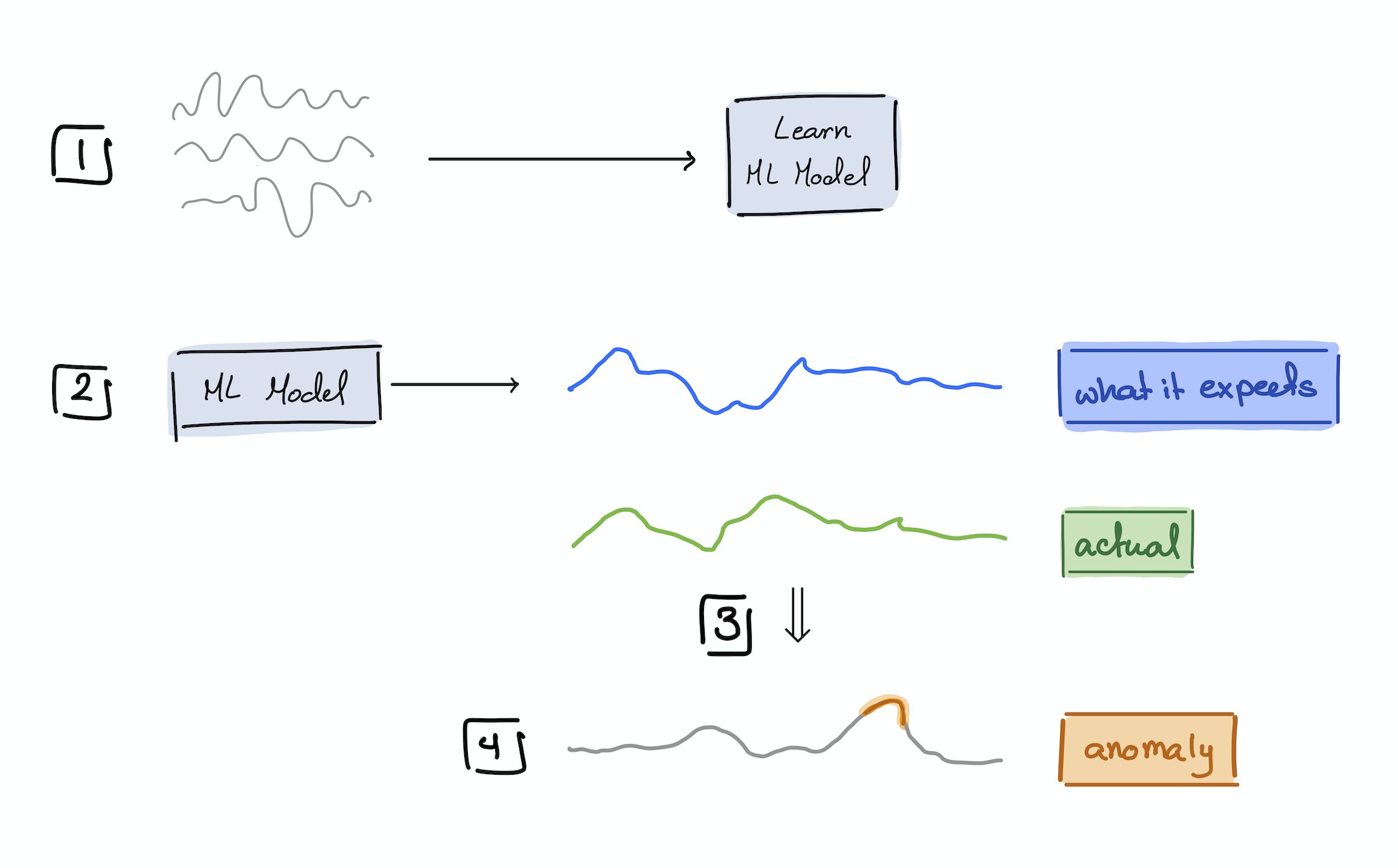signals-dev / Orion
Labels
Projects that are alternatives of or similar to Orion
 An open source project from Data to AI Lab at MIT.
An open source project from Data to AI Lab at MIT.
Orion
- License: MIT
- Development Status: Pre-Alpha
- Homepage: https://github.com/signals-dev/Orion
- Documentation: https://signals-dev.github.io/Orion
Overview
Orion is a machine learning library built for unsupervised time series anomaly detection. With a given time series data, we provide a number of “verified” ML pipelines (a.k.a Orion pipelines) that identify rare patterns and flag them for expert review.
The library makes use of a number of automated machine learning tools developed under Data to AI Lab at MIT.
Recent news: Read about using an Orion pipeline on NYC taxi dataset in a blog series:
| Part 1: Learn about unsupervised time series anomaly detection | Part 2: Learn how we use GANs to solving the problem? | Part 3: How does one evaluate anomaly detection pipelines? |
|---|---|---|
 |
 |
 |
Notebooks: Discover Orion through colab by launching our notebooks!
Quickstart
Install with pip
The easiest and recommended way to install Orion is using pip:
pip install orion-ml
This will pull and install the latest stable release from PyPi.
In the following example we show how to use one of the Orion Pipelines.
Fit an Orion pipeline
We will load a demo data for this example:
from orion.data import load_signal
train_data = load_signal('S-1-train')
train_data.head()
which should show a signal with timestamp and value.
timestamp value
0 1222819200 -0.366359
1 1222840800 -0.394108
2 1222862400 0.403625
3 1222884000 -0.362759
4 1222905600 -0.370746
In this example we use lstm_dynamic_threshold pipeline and set some hyperparameters (in this case training epochs as 5).
from orion import Orion
hyperparameters = {
'keras.Sequential.LSTMTimeSeriesRegressor#1': {
'epochs': 5,
'verbose': True
}
}
orion = Orion(
pipeline='lstm_dynamic_threshold',
hyperparameters=hyperparameters
)
orion.fit(train_data)
Detect anomalies using the fitted pipeline
Once it is fitted, we are ready to use it to detect anomalies in our incoming time series:
new_data = load_signal('S-1-new')
anomalies = orion.detect(new_data)
⚠️ Depending on your system and the exact versions that you might have installed some WARNINGS may be printed. These can be safely ignored as they do not interfere with the proper behavior of the pipeline.
The output of the previous command will be a pandas.DataFrame containing a table of detected anomalies:
start end severity
0 1394323200 1399701600 0.673494
Leaderboard
In every release, we run Orion benchmark. We maintain an up-to-date leaderboard with the current scoring of the verified pipelines according to the benchmarking procedure.
We run the benchmark on 11 datasets with their known grounth truth. We record the score of the pipelines on each datasets. To compute the leaderboard table, we showcase the number of wins each pipeline has over the ARIMA pipeline.
| Pipeline | Outperforms ARIMA |
|---|---|
| TadGAN | 8 |
| LSTM Dynamic Thresholding | 8 |
| LSTM Autoencoder | 7 |
| Dense Autoencoder | 7 |
| Azure | 0 |
You can find the scores of each pipeline on every signal recorded in the details Google Sheets document. The summarized results can also be browsed in the following summary Google Sheets document.
Resources
Additional resources that might be of interest:
- Learn about benchmarking pipelines.
- Read about pipeline evaluation.
- More about database design.
- Find out more about TadGAN.
Citation
If you use Orion for your research, please consider citing the following paper:
Alexander Geiger, Dongyu Liu, Sarah Alnegheimish, Alfredo Cuesta-Infante, Kalyan Veeramachaneni. TadGAN - Time Series Anomaly Detection Using Generative Adversarial Networks.
@inproceedings{geiger2020tadgan,
title={TadGAN: Time Series Anomaly Detection Using Generative Adversarial Networks},
author={Geiger, Alexander and Liu, Dongyu and Alnegheimish, Sarah and Cuesta-Infante, Alfredo and Veeramachaneni, Kalyan},
booktitle={2020 IEEE International Conference on Big Data (IEEE BigData)},
organization={IEEE},
year={2020}
}



